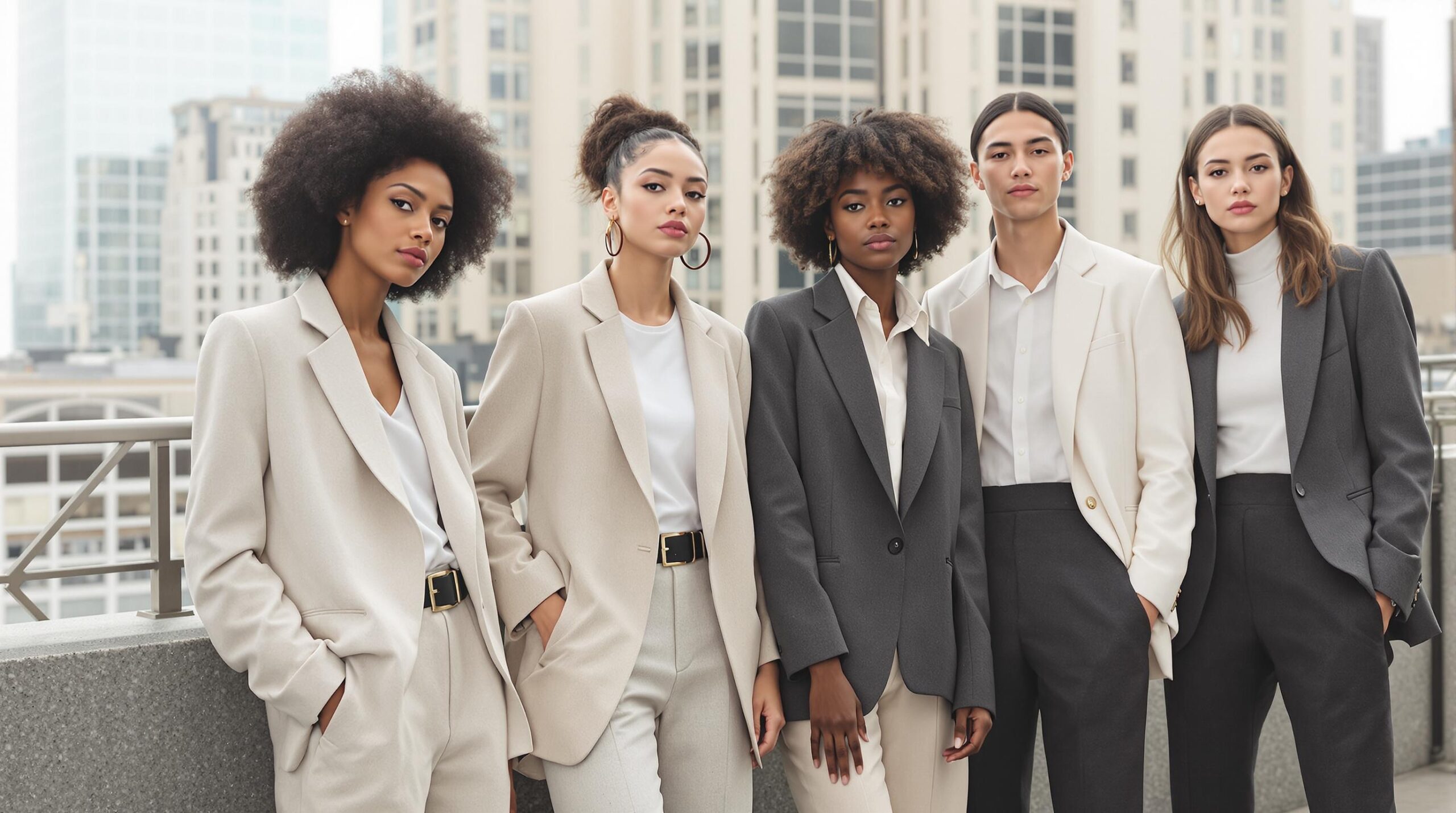In the ever-evolving world of fashion, minimalist trends are significantly impacting classic wardrobes. This modern approach is about simplicity and functionality, focusing on high-quality, timeless pieces over fleeting fashion fads. By embracing minimalist fashion, individuals can create versatile and clutter-free wardrobes, ultimately fostering a sense of personal style and freedom.
The Philosophy Behind Minimalist Fashion
Minimalist fashion is grounded in simplicity and intentionality. It encourages thoughtful choices and prioritizes quality over quantity. This trend is driven by a profound appreciation for enduring styles that transcend seasonal changes. The minimalist approach champions pieces seamlessly blending with various ensembles, allowing wearers to create more with less.
The movement stems from the broader minimalist lifestyle, emphasizing decluttering and mindfulness. In fashion, this means choosing clothing that serves a purpose and demands consistent wear. Each selected piece is critical in the overall wardrobe, contributing to sustainable and ethical fashion consumption. Additionally, minimalist fashion sincerely regards craftsmanship and fabric quality, ensuring garments endure through time and style shifts.
Key Elements of Minimalist Fashion
Simplicity, adaptability, and timelessness are the core elements defining minimalist fashion. Basic colors like black, white, gray, and neutral tones form the foundation. These hues allow seamless integration with other pieces, creating endless outfit possibilities without overwhelming visual distractions.
Minimalist garments often feature clean lines and uncluttered silhouettes, which enhance their timeless appeal. These characteristics foster a classic aura, making such pieces appropriate for numerous occasions. Minimalist garments effortlessly transition between different settings, whether a casual outing or a formal event.
Subtle details, like understated buttons or hidden zippers, complete minimalist designs without overshadowing their essence. These details enhance the garment’s functionality while maintaining a sophisticated yet straightforward appearance, further strengthening the minimalist ethos.
Reimagining Classic Wardrobes with Minimalism
Minimalist fashion is not about discarding all existing clothing but refining one’s current collection. The process involves assessing each garment’s fit, function, and frequency of wear. Removing items that no longer serve a purpose allows individuals to identify wardrobe gaps that minimalist pieces can fill.
Capsule wardrobes embody minimalist fashion, comprising a small selection of cohesive, interchangeable pieces. Focused on versatility, capsule wardrobes urge wearers to choose pieces thoughtfully. This curated collection typically includes essential items such as tailored blazers, crisp shirts, and versatile trousers. These can be adapted to various styles and occasions.
Transitioning to a minimalist wardrobe breaks the cycle of impulsive shopping and helps foster conscious consumerism. Mindful purchasing decisions ensure each added piece seamlessly integrates into the current wardrobe, aligning with personal style and values.
Essential Minimalist Wardrobe Staples
Certain staples are indispensable in any minimalist wardrobe, forming its core foundation. A crisp white shirt is a must-have, perfect for formal and casual occasions. Whether paired with tailored trousers or casual jeans, it always suits the occasion.
A well-fitted blazer is another key piece, offering endless styling possibilities. It can elevate a simple outfit or add a professional touch to workwear. Classic blue jeans, known for their timeless appeal, are essential. They pair effortlessly with various tops and footwear.
Quality over quantity is crucial when choosing outerwear for minimalist wardrobes. A well-constructed or chic trench coat can serve as a reliable layer, enduring various seasonal shifts. Footwear choices should include classic silhouettes like loafers, sneakers, and ankle boots that lend themselves to numerous outfit combinations.
Transitioning to a Minimalist Wardrobe
Transitioning to a minimalist wardrobe may seem daunting, but it can result in profound lifestyle changes. Begin by auditing current clothing and evaluating each piece for relevance, fit, and frequency of wear. This process helps identify essential items and remove pieces that no longer serve a purpose.
Investing in versatile, high-quality staples reduces clutter and simplifies outfit selection. These timeless pieces are worthier investments, providing greater returns over time. Aim to build a collection aligned with personal style preferences and values.
Gradually incorporate new minimalist additions, ensuring seamless integration into the existing wardrobe. Opt for neutral colors that effortlessly blend with diverse ensembles. Prioritize versatile styles suitable for multiple occasions, promoting a cohesive and functional wardrobe.
Sustainability and Ethical Aspects
Minimalist fashion aligns closely with principles of sustainability and ethical consumerism. Investing in quality over quantity minimizes waste and consumption, favoring garments that endure longer and need fewer replacements.
Supporting ethically produced clothing is vital to minimalist fashion, ensuring fair labor practices and reduced environmental impact. Mindful choices extend beyond individual wardrobes, promoting industry shifts toward more responsible production methods.
Minimalist fashion reduces material waste, supports sustainable manufacturing, and emphasizes creative reuse. It encourages longevity over disposability, fostering a deeper connection to each garment and discouraging frequent replacements.
Influences and Inspirations
Influences like the slow fashion movement reinforce minimalist fashion, emphasizing intentionality, quality, and value. Classic style icons like Audrey Hepburn and Steve Jobs exemplify minimalist aesthetics, inspiring countless wardrobes through their timeless approach.
Contemporary designers infuse minimalist sensibilities into their collections, transforming simple designs into statements. Their work reflects minimalist principles, advocating designs that transcend trends and promote personal expression through simplicity.
Bloggers and social media influencers further propagate minimalist trends. They showcase the beauty and versatility of pared-down wardrobes. They highlight how fewer high-quality pieces lead to greater sartorial expression.
Conclusion
Minimalist fashion redefines classic wardrobes, promoting simplicity, sustainability, and timeless style. Individuals can create efficient wardrobes that suit personal preferences by focusing on quality, versatility, and intentionality. This shift empowers individuals to craft their style narrative while contributing to a more sustainable fashion industry.
From understanding key elements and staples to embracing sustainability and ethical practices, minimalist fashion offers a pathway to mindful consumption. As fashion continues to evolve, maintaining the spirit of minimalism allows individuals to stay grounded in simplicity and authenticity.

